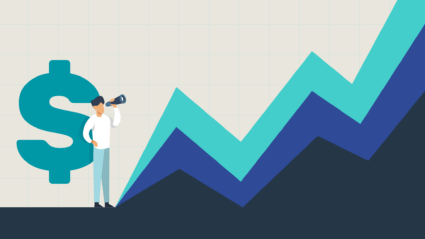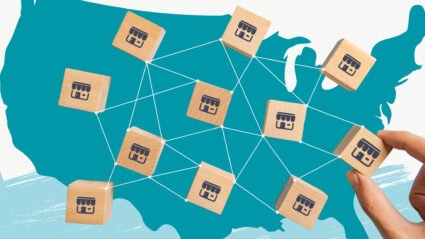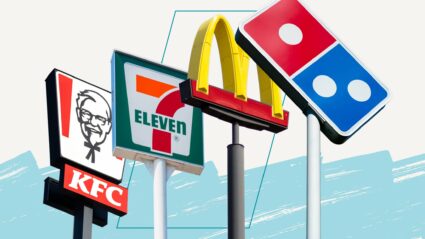During a recent Brand Innovators discussion on driving growth through digital channels, our Founder and CEO Mike Mothner had the exciting opportunity to speak with Todd Meleney, VP of Marketing at NOBULL, a revolutionary brand inspired by the world of Crossfit.
This emerging D2C brand continues to shake up one of the most competitive markets—the athletic shoe/apparel industry—by driving authentic customer connection through marketing channels that disrupt and outperform.
Todd shares how he’s managed to differentiate the brand from the heavy competition with a D2C marketing strategy that focuses on flexibility, agility, and empathy. Learn what the most successful channel investments have been for this leading digital native brand, and how you can leverage these opportunities into your own media mix.
Mike Mothner: At Wpromote, we encourage businesses of every size to Think Like A Challenger and encourage agile, disruptive marketing strategy. How do you leverage digital media to break into a competitive market like sneakers/athletic wear? What do you think are key digital marketing tools and channels, and why?
Todd Meleney: For us, it starts with our products, which are absolutely incredible products. We’ve built a community of people who train hard and don’t believe in excuses. With that, we’re much closer to market than some of the traditional larger footwear and apparel brands. In that industry, the typical time to go to market is about 18 months. But for NOBULL, it’s a lot shorter than that. We’re able to react in real-time and tell stories that are relevant right now. We use direct interactions with the community that we’ve built to be timely and to react quickly.
We’ve also always been a content-first brand. We have a full in-house studio where we produce everything directly—social media, short films, product content, partnerships with ambassadors. While we typically have a team that’s on the road, we’ve had to transition our approach this year to user-generated content on social media—celebrating our community and asking them to create content with us, through IG Live or closed-door workouts led by sponsored athletes. This was all done to create a sense of optimism, ease anxiety, and leave a positive impact on mental health.
What are the tactics you use to create user-generated content?
NOBULL stands for no BS. On the marketing side, it’s a mentality: How you get up and approach your day if you’re pursuing self-betterment or working hard. That’s what aligns with our brand and to us. That’s what the NOBULL mentality means.
We foster a community with the hashtag #IAMNOBULL. We ask the community, what makes you NOBULL? Through Instagram and social media, we feature different people based on their NOBULL stories on a weekly basis. We highlight the different properties that make them NOBULL. We spend time listening to the customer, asking them for feedback, celebrating the information they give us—and we always take their constructive feedback to heart.
Let’s cut through some of the marketing noise: What do you think the most underrated digital marketing channel is? How about the most overrated?
The most overrated, least successful channel for us has been podcast advertising. It didn’t perform for us. Reasons why: NOBULL is a very visual brand, and audio makes it challenging to see the product. Also, we don’t offer discounts or incentives for signing up for the subscription.
The winner has been Instagram and, specifically, our ambassadors. They have consistently over-delivered even as the market has gotten more saturated. The challenge lies in finding the right ambassadors who really have a connection with their audience and figuring out how to tell an authentic story through them. How can you incorporate your brand identity or service into the lives of people to make it better?
During pre-covid times, one of the places that had a meaningful impact on us was actually retail. Having community centers where people can come together and interact with the brand offline was a game-changer for us. Last year, we saw a ton of success through community events—building out community managers in different cities in the country and opening up boutique brick-and-mortar stores. I do think we’ll go back to doing that when we can (and do it safely). But that was also something that’s worked well for us.
Generally, ecommerce and DTC brands have done well this year because of the way consumer behavior has changed due to the pandemic, including an influx of new customers. How do you balance where things are headed in the D2C marketing space with the events of this past year?
I think the pandemic has certainly accelerated a few key industries and forced consumers (who may have been uncomfortable shopping online) to get comfortable with it. I don’t think that’s going to change. But I do think the way people shop in person will change. You’ve seen it with Black Friday and the overwhelming shift to digital. I think some of the things we’ve seen this year are here to stay and, as a D2C brand, we hope so.
We learned the hard way in 2020 that assuming every year is going to be about the same wasn’t such a good idea. So, looking forward in time, what keeps you up at night when you’re planning for 2021? Are there any trends or specific scenarios that you think might pose a particular challenge if they come to pass?
It comes down to flexibility and having the ability to be nimble. When thinking about long-term commitments (media buys, partnerships, athlete endorsements) we have to be extremely confident in what the future is going to look like in order to make multi-year commitments on things.
There’s got to be a level of variability for us. Just look at our ad spend: A meaningful percentage of our spend is on channels that are extremely nimble, that we can turn off or dial up and down on a daily basis. This approach is very different from traditional 3-, 5-, or 10-year partnerships, where you’re locked in without knowing if these events may or may not even happen.
What are some D2C trends will we see as we move into 2021?
The focus will be on meeting the customer where they are but doing so with a level of honesty and empathy because everyone’s gone through their own experience over the last 12 months. Not everyone wants or needs the same thing from a brand they’re buying from. Also, marketers must personalize the customer experience as much as possible—through recommending unique, personalized products, catering to the different behaviors and segments of their communities, and treating their different pockets of consumers with a level of honesty and empathy. The brands that do that well are the ones that are going to win because there’s a level of inherent trust that is built through doing that in a time when trust is probably the most important thing you can offer your audience.
How are you able to scale your influencer program?
We have dozens of athletes that are formerly partnered with the brand through contracts as well as hundreds and thousands of informal ambassadors that we work within various parameters—whether it’s an NFL player that we’re seeding products to, or a population of trainers who work in various boutique studios like boot camps or soul cycles. We have a handful of team members who focus on that.
We also use a software called Swell to seed our products and manage those relationships with our ambassadors. It ties into our Shopify account and allows us to report on how much product is being activated by our ambassadors. By having a point of contact for different buckets of ambassadors and influencers, we’re able to curate different stories for each one of them. We use our influencers for brand marketing much more so than performance marketing. Everyone that’s representing our brand, whether they’re formally under contract or an informal ambassador using our hashtag, has to operate under the same playing field. Our influencer program is ever-evolving and certainly a challenge.
You’re a newer, digital-first D2C brand. What can some of the older legacy brands learn from you to market to Gen Z or similar audiences? What advice would you give them?
I would just say that no strategy is too big, and no strategy is too small. The brands that are winning may only have a few dozen micro-influencers, but the people who are connected with those personalities are extremely avid and passionate and engaged. It’s hard to do that when you have pro athletes who are making millions of dollars every year, and you think you have to focus on them. But there’s a whole other layer of engagement through the community that brands can build on—a community which is now accessible when 5 years ago it might not have been. I don’t think any brand in any industry can be above that level of community.
NOBULL has earned loyal fans for all the right reasons: They had a mission, created a quality product, and fostered a community to embrace them—all with an agile, flexible, and human-centered marketing strategy.
Want to dive deeper into the top trends and predictions shaping marketing’s future? Watch the virtual on-demand event, Rise to the Challenge of… The Future: What’s to Come in 2021 and Beyond.







Responses